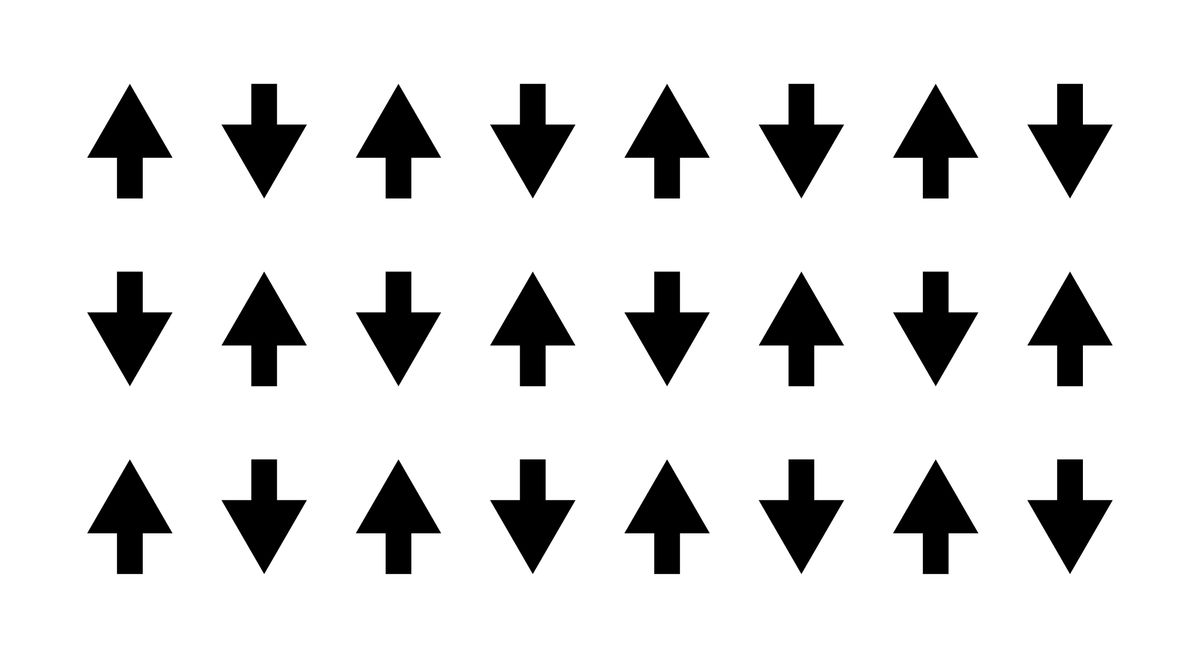Strange magnetic materials known as antiferromagnets are promising candidates for a next generation of computer memory. Now scientists have discovered magnetic effects within these materials that could help them operate with greater speed and energy efficiency than current devices.
Standard magnets have particles that are magnetically all oriented in the same direction. As a result, their magnetic polarity can influence their surroundings. In contrast, antiferromagnets , which are far more abundant in nature than regular magnets, have particles that align themselves into opposing directions throughout the material. This leads antiferromagnets to have virtually no magnetic effects on their environment.
Antiferromagnets could find use in state-of-the-art magnetoresistive random-access memory (MRAM), which stores data using permanent magnets, unlike standard computer memory technologies such as dynamic and static RAM, also known as DRAM and SRAM, which are based on storing electric charge. MRAM can read and write data at speeds similar to DRAM and SRAM, but MRAM consumes less power and, like flash memory, is nonvolatile, meaning it does not require a steady power supply to retain data.
One problem of MRAM based on ferromagnets is how external magnetic fields can inadvertently tamper with their data. Moreover, neighboring ferromagnets can interfere with each other unless there is enough distance separating them, limiting MRAM's ability to scale to higher densities for lower costs.
"Antiferromagnets have a huge potential for ultrafast magnetic recording"
MRAM based on antiferromagnets could avoid such problems. In addition, the magnetic properties of antiferromagnets suggest antiferromagnet-based MRAM can write and rewrite data thousands of times faster than ferromagnet-based MRAM.
"Antiferromagnets have a huge potential for ultrafast magnetic recording," says study lead author Davide Bossini, a physicist at the University of Konstanz in Germany.
On the inside, antiferromagnets are typically split into many smaller areas called domains, in which opposing magnetic polarities are arranged in an orderly way. "Domains are very hard to manipulate," Bossini says.
Antiferromagnet domains are separated from each other by transitional areas known as domain walls. Until now, little was known about how domain walls could influence the magnetic properties of antiferromagnets, especially during the kinds of dynamics useful for ultrafast operations.
In the new study, Bossini and his colleagues investigated what happened when antiferromagnetic crystals of nickel oxide were exposed to ultrafast laser pulses lasting only femtoseconds, or quadrillionths of a second.
The scientists found that domain walls could help manipulate oscillations of magnetism known as spin waves. Specifically, domain walls could help couple different frequencies of spin waves that would normally not interact, and do so across different domains.
"Our results show that domains are not a nuisance to be avoided and overlooked, but offer additional possibilities in antiferromagnets," Bossini says.
These findings suggest that coupling the quasiparticles making up spin waves, known as magnons, could help transfer information within an antiferromagnet. This in turn could lead to computing done with magnons on ultrafast time scales with extremely limited energy dissipation. "No complicated interfaces requiring expensive and technologically challenging nanofabrication techniques are required," Bossini says.
Future research can engineer antiferromagnets with a wide variety of differently tailored domain structures to explore how they perform, Bossini says.
The scientists detailed their findings August 9 in the journal Physical Review Letters.
Charles Q. Choi is a science reporter who contributes regularly to IEEE Spectrum. He has written for Scientific American, The New York Times, Wired, and Science, among others.



